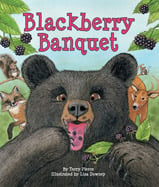Alignment to Standards for NH

| Grade | Number | Standard |
|---|---|---|
| 2 | S:LS1:2:1.2 | plants and animals as living things and describe how they are alike and different. |
| 2 | S:LS1:2:2.1 | plants and animals have features that help them survive in different environments. |
| 2 | S:LS2:2:1.1 | living things can be found almost anyplace in the world; and that specific types of environments are required to support the many different species of plant and animal life. |
| 2 | S:LS2:2:2.1 | Identify the resources plants and animals need for growth and energy, and describe how their habitat provides these basic needs. |
| 2 | S:LS3:2:3.1 | similarities and differences in both behavior and appearance of plants and animals. |
| 2 | S:LS3:2:3.2 | there are different species of living things in various places around the world. |
| 2 | S:LS5:2:1.1 | Recognize that new products can be made out of natural materials, such as paper from trees and cloth from various plants and animals. |
| 2 | SS:EC:2:5.1 | Define the term resources, e.g., trees, books |
| 2 | SS:GE:2:3.2 | components and distribution of ecosystems, e.g., desert or rain forest. |
| 2 | SS:GE:2:4.2 | Identify what are natural resources, e.g., water or trees. |
| 2 | SS:GE:2:5.1 | role of natural resources in daily life, e.g., food, clothing, or shelter. |
| 2 | SS:GE:2:5.2 | how people use resources, e.g., building homes or the food they eat. |
| 4 | S:LS1:4:1.2 | Sort/classify different living things using similar and different characteristics; and describe why organisms belong to each group or cite evidence about how they are alike or not alike. |
| 4 | S:LS1:4:2.1 | living organisms have certain structures and systems that perform specific functions, facilitating survival, growth and reproduction. |
| 4 | S:LS1:4:2.3 | physical structures of an organism (plants or animals) allow it to survive in its habitat/environment |
| 4 | S:LS1:4:3.1 | plant and animal characteristics that are inherited, such as eye color in humans and the shape of leaves in plants, and those that are affected by their environment, such as grass turning brown due to lack of water. |
| 4 | S:LS2:4:1.1 | Describe how the nature of an organismês environment, such as the availability of a food source, the quantity and variety of other species present, and the physical characteristics of the environment affect the organismês patterns of behavior. |
| 4 | S:LS2:4:2.1 | the organization of food webs. |
| 4 | S:LS2:4:2.2 | energy is needed for all organisms to stay alive and grow or identify where a plant or animal gets its energy. |
| 4 | S:LS2:4:3.1 | plants and animals interact with one another in various ways besides providing food, such as seed dispersal or pollination. |
| 4 | S:LS2:4:3.2 | Describe ways plants and animals depend on each other (e.g., shelter, nesting, food). |
| 4 | S:LS3:4:1.1 | how environmental changes can cause different effects on different organisms. |
| 4 | S:LS3:4:1.3 | changes in the environment can cause organisms to respond (survive there and reproduce, move away, die). |
| 4 | S:LS3:4:3.2 | for any particular environment, some kinds of animals and plants survive well, some less well, and some cannot survive at all. |
| 4 | SS:GE:4:3.4 | distribution of ecosystems: location of certain plants/animals, food chain |
| 4 | SS:GE:4:3.5 | how humans interact with ecosystems: forest management, impacting wetlands. |
| 4 | SS:GE:4:5.4 | role of natural resources in daily life, e.g., food, clothing, or shelter. |